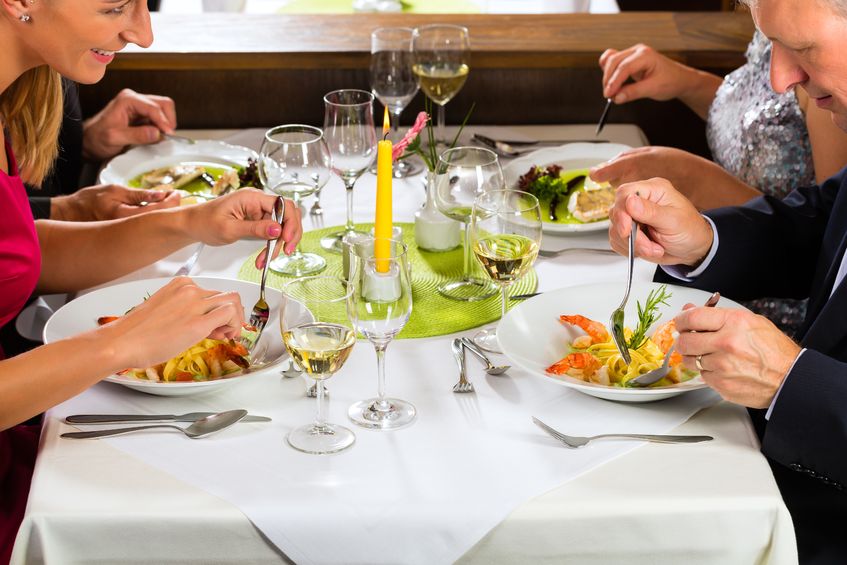Imagine turning to your spouse at dinner time and saying, “Hey, let’s check out the dining room at that senior living community down the street, I hear their curried lamb with mint sauce is delicious.”
Imagine turning to your spouse at dinner time and saying, “Hey, let’s check out the dining room at that senior living community down the street, I hear their curried lamb with mint sauce is delicious.” Of course that’s a preposterous scenario, or is it? It begs the question: Why does the food at senior living communities always get such a bad rap?
I spoke with David Koelling, President of Strategic Dining Services, a Senior Housing Forum partner and RonnDa Peters, VP of Marketing and Sales, and asked them why that old cliché of institutionalized food stubbornly persists.
According to David and RonnDa, the problem stems from a culture of complacency, developed over time in the kitchens of senior living communities and fueled or unknowingly supported by a lot of false assumptions and excuses. But the good news is that, with education, training and an attitude shift, dining in senior living communities can actually become a competitive asset rather than a liability.
Let’s start with Strategic Dining Services’ four standards of a great dining experiences:
- Dishes made from scratch
- Restaurant-quality preparation and presentation
- Meals served fresh and timely to the table
- High service and hospitality standards
This reads like the list of a four star restaurant. How is it possible for senior living communities with notoriously tight budgets and young, inexperienced service employees?
The key, according to David and RonnDa, is to eliminate old excuses and replace them with practical, workable solutions. Let’s take a look at each standard.
Four Big Excuses
- Dishes made from scratch – The excuse: It requires too much time. We don’t have enough staff. Bottom line: it’s just too expensive. “The truth is that it takes no longer to cook from scratch than to cook using pre-processed food,” says RonnDa. “The key is in re-orienting your staff in the dynamics of food assembly and preparation. Many steps can be done in advance. Provide the right training and you will be surprised at how quickly a fresh recipes can be created from scratch.”
- Restaurant-quality meal preparation – The excuse: The residents are old, their taste buds aren’t what they used to be. We can’t please everyone, so why bother to try? According to RonnDa, many chefs, in an effort to avoid issues, cook their food to the lowest denominator. So, if one person complains that the broccoli is undercooked, then all the broccoli will get cooked longer and, more than likely, over-cooked. RonnDa and David work with their clients to help them adopt a ‘restaurant mentality’; one in which the food is prepared to a professional standard of taste and presentation. “Stop cooking down to your seniors,” recommends RonnDa. “Deal with issues on a case-by-case basis as any good restaurant would. You’ll have happier chefs, because they are actually cooking again, and more satisfied diners, because you are delivering a dining experience to their liking.”
- Meals served fresh to the table – Excuse: Impossible! How can we serve 75 people at the same time without pre-cooking and pre-serving? We’ll have people waiting for hours. You are right! You can’t do it! You’ve got to fix the flow to attain top quality service and execution. The Strategic Dining team has successfully worked through this issue with a number of clients. There is not a cookie-cutter solution. Each community has a unique set of circumstances.
- Keeping service and hospitality standards high – Excuse: There is no way we can meet high standards of service and hospitality using high school students. We have high turnover. They are only with us for a short time. They lack motivation as well as skills. “This is an area with so much potential for change,” says David. The answer, he says, lies in defining what you expect from younger workers and then giving them the tools and training to meet those expectations. “Treat them as part-time transients and that is what you will get. Treat them as future chefs and waiters-in-training and you will be amazed at the higher level of quality and commitment you get in return.”
Clearly, RonnDa and David are passionate about changing the culture in senior dining. Of course, they acknowledge that doing so requires an adjustment in attitude and approach as well as training and education. But for those willing to push aside old ways and adopt new ones, the dining experience they provide for their seniors can be transformed from a watered down, institutionalized process to a truly hospitality-centric experience, complete with dishes made from scratch, nicely presented, and delivered fresh to the table.
Some curried lamb with mint sauce, perhaps?
Sue







